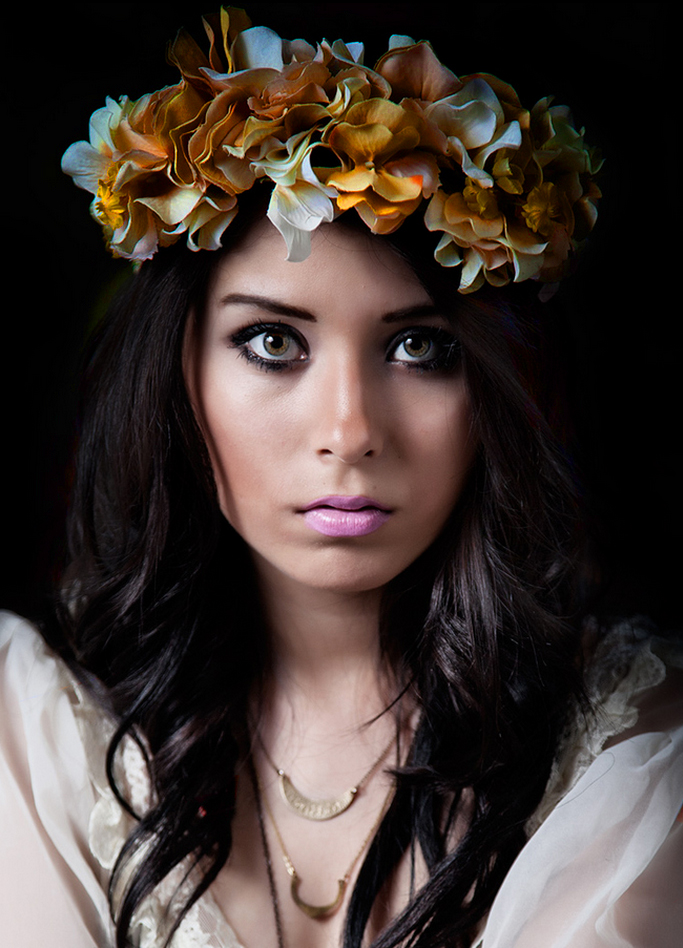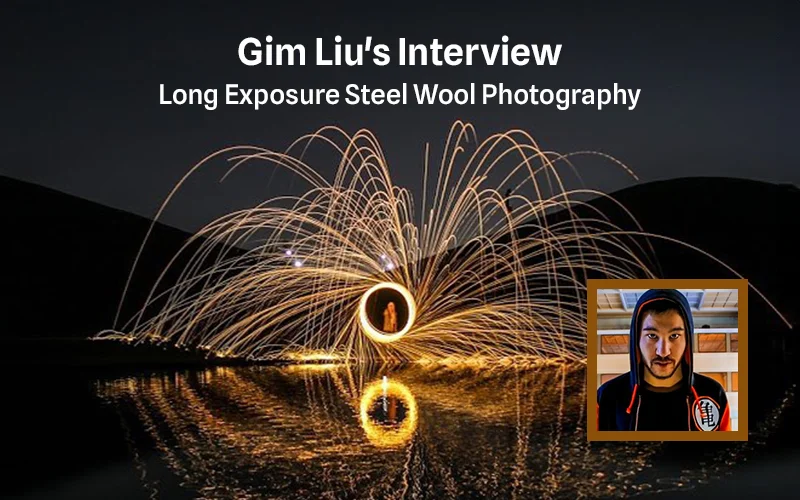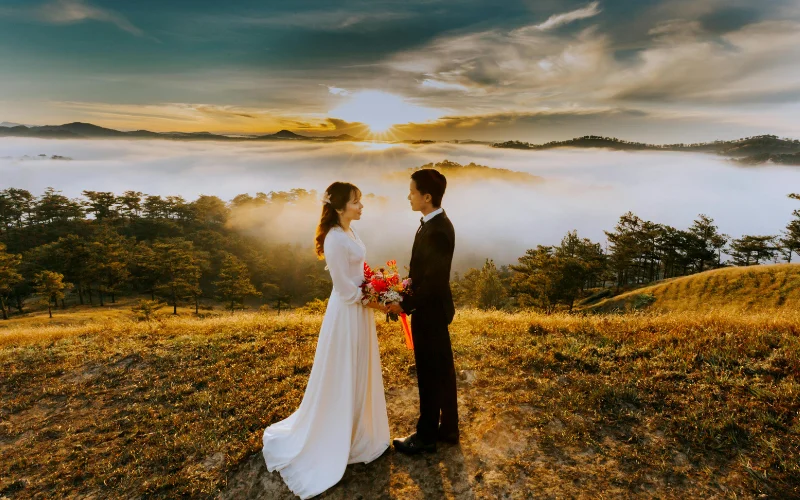“The image-world that bids to outlast us all . . .”
Over the past twenty years, Ginevra Archimboldi has produced six remarkable photo books: Women (1994), Portraits (1995), Color (2002), Graffiti and Still Life (2005), Loves (2013), and Images in Los Angeles (2014). Her work has been recognized by the New York Lens, LA Framed, and most recently by the American Association of Image / Photograph / Story. In 2013, in addition to receiving the most prestigious award in American photos, Loves also served as an inspiration for the upcoming film Near the Wild Heart.
Our interview took place at her home in Presidio, Texas where she lives alone. Although it was nearing fall, the weather was still too warm for any walks around her ranch, or into town. We decided that we’d stay inside and only talk during the night about portrait photography techniques (Archimboldi is a notorious insomniac and never wakes before noon). She spoke mostly sitting down, her torso hidden behind her large work desk.
On the wall opposite her desk, she has hung her most famous photograph: “Emma, September 1990”. Archimboldi, on several occasions, meditates on the photograph, staring into the black and white portrait as she words her answers. Like the woman in the photograph, she is pale and dressed in all black. Her eyes are just as distant as the woman in the photograph. She never mentions the photograph above me and our eyes meet only once.
INTERVIEWER
When you first started out, you shot only in black and white.
GINEVRA ARCHIMBOLDI
I did, yes.
INTERVIEWER
Now you shoot in color. Why the change?
GINEVRA ARCHIMBOLDI
I guess I see the world differently. It’s not difficult to change with time. You start analyzing why you like this or that, and suddenly you don’t. You think it can’t happen to you, or something like that, but that’s wrong. It’s you.
INTERVIEWER
What do you mean?
GINEVRA ARCHIMBOLDI
I never thought about it. I just took photographs. I was doing something I needed to do. You can’t choose what you see – you just move toward how that makes you feel. You can’t enjoy it. Sometimes when I’m in my ugly moods — which a friend quite accurately described as when I’m ravagingly absent — I don’t even like being a photographer. If I were a bit younger, I would say I hate it.
INTERVIEWER
I read you were tempted to abandon photography.
Ginevra stands up and walks to her bookshelf, picking up a 5×5″ pigment ink print.
GINEVRA ARCHIMBOLDI
Yes, if you want to call it that. But I always thought of it this way. Imagine yourself in the darkest auditorium in the world and you’re alone on the stage. All the light on you, and everyone else in the dark.
INTERVIEWER
Yes.
As she speaks, Ginevra passes the photograph she just gathered. In it, a kitchen table, a newspaper, tiny pieces of bread, a book, glasses, all basking in a slanted morning light.
GINEVRA ARCHIMBOLDI
Everyone’s there for your performance, a piano recital, let’s say, and you stand at the head of these many faces. All of them looking at you, wondering when you’re going to start, some eager for their first experience, others longtime fans and enjoying their second or third, and, at the front, because that’s always where they are, the ones who start unimpressed. These are the skeptics, and they want to believe that you’re fraud, though it was your music that inspired them, that they listened for. They will never accept anything you do unless it matches exactly what they’ve been told you do. Okay, now suppose you’re sitting at the piano, and you feel all these thoughts. You feel the stings of everyone’s attention, the tiny stabs of feeling unworthy. Considering that it’s much easier to walk up and say goodbye, you may even wish you weren’t there. That you weren’t the hated piano player. That, instead of being in the light, you were in the dark with them — quiet, comfortable, and with the ability to gaze and judge. You may start to feel like your expression was a curse. A silly and treacherous child’s thing. Yet you can’t leave. You’re stuck because it’s who you are. Apparently, you still play as a child would, and all great artists, though I’m not certainly one of them, seem like children to me. They never grow out of that way of seeing. This, of course, has been said many times, and I’m not certainly the first, but I still agree with whoever said it. Now, look at that photograph, tell me what you think it says.
INTERVIEWER
I would say longings for home, for once lived experiences. This light and this room and the way everything is arranged, all point to nostalgia.
GINEVRA ARCHIMBOLDI
That’s good, but that’s not exactly as I would put it. Of course, in analyzing a photograph, we all think about the master image-maker aspect of it. The active spectator, but I didn’t make this image because of the light or the objects in it. It was a serious accident. It was made purely by chance. So now knowing that, what does this image mean to you? What changes do you have? Who, then, was feeling those longings as you called them?
Ginevra gets up and takes the image back to the book shelf.
INTERVIEWER
I was feeling that.
GINEVRA ARCHIMBOLDI
You, entirely.
INTERVIEWER
But this has already been discussed by many others. The image makes sense only by literal and figurative contexts, extant or subconscious. What do you mean, then?
GINEVRA ARCHIMBOLDI
The hated piano player is hated because he’s not quiet. If he were alone in his room, keeping his voice unheard, and playing for nobody but the dark space in his closet, then he could have lived his life perfectly intact without any anxiety. Every artist is hated, I think. The tension is there, anyway. Art to be valued has to be special, above something. This level, I don’t know. But it’s there, most everyone can sense when something is beautiful. Of course, this goes into cultural signifiers of worth and contextualized language that must be used. Comedy, for instance, is hard to translate successfully. Photography, my photography, must meet a standard in order to be even considered. It’s scorned, and only at the very end is it appreciated. And this is begrudgingly and only if it matches that inner desire every viewer has. I hate that. What this gets to is that I’m being judged by the caprices of a viewer who is judging himself.
INTERVIEWER
So this self-doubt, or anxiety as you said, is a social one. Art is only valued once it’s shared.
GINEVRA ARCHIMBOLDI
Yes.
INTERVIEWER
But as you just implied, it’s also ambiguous, open to many interpretations, thoughts, criticisms, and appropriations. Do you think truth can exist in art?
GINEVRA ARCHIMBOLDI
Truth. Let’s get into that. However, I think it may be easier to start with what it’s not. Suppose truth were an object, then it would have to be the same to every person looking at it, correct?
INTERVIEWER
Yes, each person would be able to discern it as the same.
GINEVRA ARCHIMBOLDI
Let’s say it were a rock. Every person would start with that. Truth is a rock.
INTERVIEWER
Truth is hard.
GINEVRA ARCHIMBOLDI
Right, it’s not alive. Then so-and-so would continue. Truth is this. Truth is that.
INTERVIEWER
So truth cannot have multiple meanings, only one. It must be the same to everyone.
GINEVRA ARCHIMBOLDI
Yes. Truth must be true to everyone. Now, back to the rock. I said it was not alive on purpose. Truth cannot live. Things that live, die. Truth must endure beyond us. We wouldn’t want truth to die like we do. Truth cannot be alive.
INTERVIEWER
Alive? In the ontological sense?
GINEVRA ARCHIMBOLDI
Yes, it cannot exist in any tangible form. You cannot grab truth and say this is true. Truth permeates all things and effuses with all. But it cannot be captured in a bodily form. You could, of course, describe something as true. But this quality resides outside whatever is being described. The object reflects truth. Truth is something else.
INTERVIEWER
It is a quality to find, a descriptor —
GINEVRA ARCHIMBOLDI
Yes, but having said that, let’s imagine we could gather truth and have it stand before us. What would you see?
INTERVIEWER
I don’t know.
GINEVRA ARCHIMBOLDI
Let’s imagine truth as that photograph you just held. If that photograph were truth, we would know that truth isn’t universal. Truth wouldn’t be what we just said it was because you would be able to describe that photograph as you just did. And I would say, “No, you’re wrong, it’s this.” But who would be right? I took the photograph but you see it as you will. I cannot force you to see what I see.
INTERVIEWER
So photography is not truth? Or true? Deals with truth?
GINEVRA ARCHIMBOLDI
Correct but it gets more difficult now. Like we just said, truth cannot be held, right? So truth cannot be that photograph, or photography. So truth is outside of it. Yet things can reflect truth as we said. So someone could say that that photograph reflects some form of truth.
INTERVIEWER
What does a photograph capture?
GINEVRA ARCHIMBOLDI
It captures the world as it is seen by one photographer at one time. You could also say that a photograph cannot capture something that’s not true.
INTERVIEWER
But some have written that photography can no longer do that because we have the power to manipulate, digitally or otherwise.
GINEVRA ARCHIMBOLDI
For instance?
INTERVIEWER
Say a doctored image. Or a photograph of New York that’s really a film set, an illusion, a trick. If you capture a lens flare, this doesn’t mean that someone next to you, at that point of time, could see it.
GINEVRA ARCHIMBOLDI
Are you sure? The natural eye cannot see the lens flare, but that doesn’t mean that the light doesn’t exist.
INTERVIEWER
Right. It’s a distortion. Light normally doesn’t act like that to us.
GINEVRA ARCHIMBOLDI
To us, exactly. You cannot see the infrared particles of light heating our bodies, but they are there.
INTERVIEWER
And how about a doctored photograph? The film set that mimics New York? You cannot say that the photograph really captured New York?
GINEVRA ARCHIMBOLDI
The doctored photograph is no longer an image. It’s a work of art. That’s shit. But for the film set, well, you’re getting into signifiers and language. The photograph is only capturing what’s in front of it, no more, no less. If you want to say that those objects are New York, then go ahead. The camera isn’t saying that.
INTERVIEWER
So photography captures truth.
GINEVRA ARCHIMBOLDI
Reflects truth, I would say.
INTERVIEWER
So interpretations are invalid because they are speaking in places where the photograph –
GINEVRA ARCHIMBOLDI
The image.
INTERVIEWER
The image?
GINEVRA ARCHIMBOLDI
An image is the world a photographer captures at a precise moment of time. A photograph is that physical reproduction. The image cannot say anything. The photograph can and will. The photographer makes a photograph. The image is found.
INTERVIEWER
So interpretations are invalid then?
GINEVRA ARCHIMBOLDI
No. Truth is not seen in the interpretations but in the image. Interpretations are not truth. We know this. They’re subjective and because they depend on the person, they’re also hierarchical. Some person’s opinion will be more seriously considered because we’re told they’re important, or intelligent, or in-the-know. They’re hierarchical because we’ve structured ourselves that way.
INTERVIEWER
So let’s get back to the original question then. Do you think truth can exist in art?
GINEVRA ARCHIMBOLDI
Short answer: no. Long answer: I think art is a personal search for truth. Let’s get back to that sad and anxious piano player. Why do you think all those people went to see him play?
INTERVIEWER
Because he’s talented.
GINEVRA ARCHIMBOLDI
Yes, but why is he considered talented to so many people though?
INTERVIEWER
What do you mean?
GINEVRA ARCHIMBOLDI
I’ve known many great piano players but not all of them are famous.
INTERVIEWER
He’s considered talented because he’s affecting something in them. He’s almost becoming universal. He’s popular because many people can relate to how he plays.
GINEVRA ARCHIMBOLDI
All of them? Even those that I said started unimpressed? Why would they go there? Why even listen to him in the first place?
INTERVIEWER
They want to see what his deal is. I think they want to confirm his greatness.
GINEVRA ARCHIMBOLDI
Right. Now, imagine this sad little piano player starting, and let’s say he gets through a first movement, a most perfect thirty minutes. Then, because of some self-doubt or fear, or self-implosion, or subconscious rebellion, this sad little piano player hits a wrong key – let’s say a sharp when it should be a flat, or vice versa, and in this one mistake, this one unintentional improvisation, the piano confirms all the fear everyone had.
INTERVIEWER
Which fear?
GINEVRA ARCHIMBOLDI
His fear, their fear that he wouldn’t live up to what others had said.
INTERVIEWER
Yes.
GINEVRA ARCHIMBOLDI
At that moment, something happens though. This improvisation wasn’t necessarily bad – just different. The piece didn’t have it written down, but because of it, at that moment, the piece is immensely better. The piano player can feel it. He starts to cry, of course, but it’s joyful. He’s overwhelmed with the sheer torture of it. In a piece he’s practiced for years, in a muscle memory that’s been conditioned and trained, the piano player finds a tiny wrinkle he has never noticed before and craves more of it. At his exact worst, he finds his best.
INTERVIEWER
Something that means more to him because it wasn’t written, that it came from him?
GINEVRA ARCHIMBOLDI
Yes, exactly. And what do those hateful ones think? What do they feel?
INTERVIEWER
They realize nobody can be that great. It makes them happy to think they were right.
GINEVRA ARCHIMBOLDI
And the others? The ones who only went for the pleasure of hearing music played by someone better than them? What do they think?
INTERVIEWER
I don’t know. They probably reacted differently. Some, like the piano player, probably thought it was better. Others, less so.
GINEVRA ARCHIMBOLDI
Yes. That’s what I would think also.
INTERVIEWER
So what does this get to?
GINEVRA ARCHIMBOLDI
In the sad little piano player’s worst, we find exactly what everyone was expecting. They each found something in it. But I take sympathy on those who hated him. It was them who were the most heartbroken. It was them who were led to believe in the truth of art. They are innocent because they mistook someone else’s word as a substitute for what’s deep within them. They are the artist without the art. They are the dark talents, as Bolano called them. Those meant to hunt truth, but, because of something, they’ve become lost. They seek outside themselves.
INTERVIEWER
Art is a personal search for truth. If we both enjoy something, then we both share a history.
GINEVRA ARCHIMBOLDI
Lovely — yes, art is the most personal of things, and if you find someone else who knows that precise note, well that’s the stuff of love. The sad little piano player loves those who love his mistake.
INTERVIEWER
So high and low art?
GINEVRA ARCHIMBOLDI
The same. It’s all the fucking same. There’s no fucking high and low art. There’s just allusion and language and context. It’s all a game to find somebody to love. If they want to call it low or simple, then do it. That just says something about you. Of course that being said, some people do love the challenge of finding beauty in the most obscure and complicated of places.
INTERVIEWER
Beauty? We haven’t talked about beauty. What’s beauty to you?
GINEVRA ARCHIMBOLDI
We already discussed it.
INTERVIEWER
We have?
GINEVRA ARCHIMBOLDI
Yes.
INTERVIEWER
Could you help me remember?
GINEVRA ARCHIMBOLDI
That photograph.
Ginevra points to the photograph on the bookshelf.
INTERVIEWER
Yes.
GINEVRA ARCHIMBOLDI
Why did you say a longing for home?
INTERVIEWER
The photograph reminds me of home. It’s a beautiful and quiet moment.
GINEVRA ARCHIMBOLDI
It spoke to you.
INTERVIEWER
Yes, even though it was made through chance.
GINEVRA ARCHIMBOLDI
You responded to a photograph that wasn’t meant be a photograph, an image of a home that reminds you of your own. You call it beautiful, why?
INTERVIEWER
I began remembering my old home, my mother, my grandmother. It was a memory.
GINEVRA ARCHIMBOLDI
That’s what I think beauty is.
INTERVIEWER
A memory.
GINEVRA ARCHIMBOLDI
Yes, just like the senses to behave this way. Give us impressions, give us feeling, give us beauty. The memory of something inside you calls to you. That’s it. Find your home through another’s expression of home. Find what’s good by trusting your sense of what’s good.
INTERVIEWER
Thank you, Archimboldi.
*This interview is fictional. There is no Ginevra Archimboldi. I started to write a post about my thoughts on photography as they are right now, and this came out. Please excuse this massively pretentious way of saying it.
**Also, I should mention that this — whatever this is — was inspired by the Paris Review interviews.











